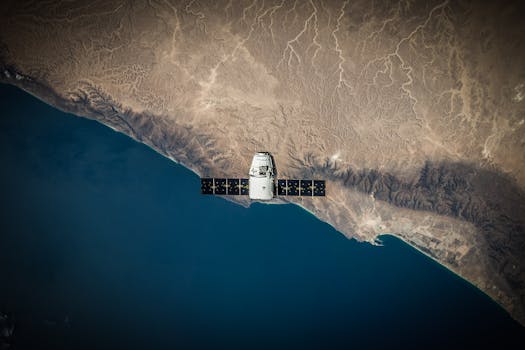
MEO Satellites: Revolutionizing Global Communication with Medium Earth Orbit Technology
MEO satellites, or Medium Earth Orbit satellites, are a type of satellite that operates in an orbit between 2,000 and 36,000 kilometers above the Earth’s surface. This orbit is higher than Low Earth Orbit (LEO) satellites but lower than Geostationary Orbit (GEO) satellites. MEO satellites have gained significant attention in recent years due to their unique advantages over other satellite orbits.
Benefits of MEO Satellites
MEO satellites offer several benefits that make them an attractive option for global communication. One of the primary advantages of MEO satellites is their ability to provide coverage of large areas with fewer satellites. This is because MEO satellites have a higher elevation angle than LEO satellites, which allows them to cover a larger area with a single satellite. Additionally, MEO satellites have a lower latency than GEO satellites, which makes them more suitable for real-time communication applications.
Applications of MEO Satellites
MEO satellites have a wide range of applications, including navigation, communication, and Earth observation. One of the most significant applications of MEO satellites is in the field of navigation. The Global Positioning System (GPS) and other navigation systems rely on MEO satellites to provide location information and timing signals. MEO satellites are also used for communication purposes, such as providing broadband internet access to remote areas. Furthermore, MEO satellites are used for Earth observation, such as monitoring weather patterns, tracking climate change, and detecting natural disasters.
Examples of MEO Satellites
There are several examples of MEO satellites that are currently in operation. The GPS constellation is one of the most well-known examples of MEO satellites. The GPS constellation consists of 24-32 satellites that operate in MEO at an altitude of approximately 20,000 kilometers. Another example of MEO satellites is the Galileo constellation, which is a European navigation system that consists of 30 satellites operating in MEO. The O3b constellation is another example of MEO satellites, which provides broadband internet access to remote areas.
Future of MEO Satellites
The future of MEO satellites looks promising, with several new constellations and systems being developed. One of the most significant developments in the field of MEO satellites is the introduction of new technologies, such as phased array antennas and digital payloads. These technologies will enable MEO satellites to provide more advanced services, such as high-speed data transfer and advanced navigation capabilities. Additionally, the development of new launch vehicles and satellite manufacturing technologies will make it easier and more cost-effective to launch and operate MEO satellites.





